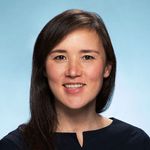Two Researchers from the BU Shape Lab Talk About the Computational Design of Fabric Framework

Earlier this week Emily Whiting and Xiaoting Zhang were highlighted in BU Today’s “The Brink” magazine. The article entitled “Fabric Gives Form to a New DIY Manufacturing Method.” featured their project that focuses on combining computer science and a fabrication process known as fabric framework.
Fabric framework makes it easier to create large-scale custom shapes from scratch. The difficulty in the past has always been creating organic-shaped structures that are curved and inconsistent. Specifically, their process includes developing an algorithm that calculates how to cheaply and easily craft sculptural objects using fabric, plaster, and a sewing machine. “We’re using the concept of static equilibrium and fabric mechanics to predict how fabric hangs and deforms under the pressure of casting fluid,” explains Whiting. The manufacturing possibilities are endless with the main use possibly influencing architecture. “There is a lot of use for this in architecture because we are not limited to simple shapes,” says Zhang.

Emily Whiting is an Assistant Professor of Computer Science, CAS, and is the director of BU’s Shape Lab, where the group investigates research problems in Computer Graphics and Computational Fabrication, with interests extending into Human-Computer Interaction and Engineering Mechanics. Additionally, she is a Research Fellow at the Hariri Institute for Computing and is an affiliate of the Artificial Intelligence Research (AIR) Initiative.

Xiaoting Zhang is a postdoctoral researcher focusing on 3D fabrication, computer-aided design, and computational geometry. Her recent interests revolve around shape modeling and optimization for additive manufacturing.
About the Hariri Institute for Computing
The Institute initiates, catalyzes, and propels collaborative, interdisciplinary research and training initiatives for a better society by promoting discovery and innovations through the use of computational and data-driven approaches, and advancing computing sciences inspired by challenges in engineering; social, health & management sciences; and the arts.